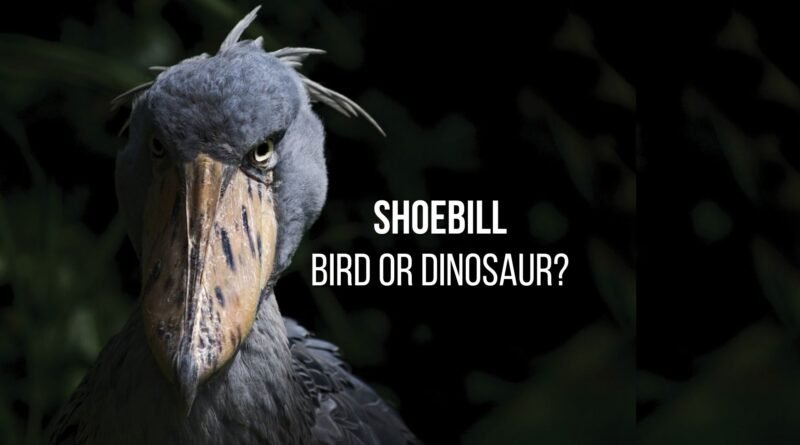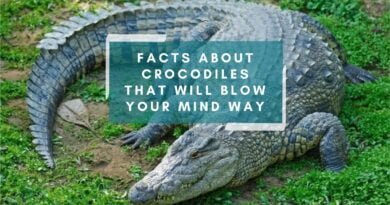Shoebill stork: Meet the dinosaur-faced bird
No other bird can remind us of its kinship with dinosaurs as well as the Shoebill stork or Shoe-billed Stork (Balaeniceps rex). Take a look at the photos below and you will understand why. Their peculiar and exotic, almost prehistoric appearance, in addition to their intimidating look, are visible proof that birds were once dinosaurs. In some countries, it is also known by the name whale-headed stork or whalebill.
But despite these features, there is no need to be scared. The shoebill stork is docile and interacts well with humans. Maybe that’s why, unfortunately, it’s endangered. It doesn’t fear us, as it should ☹
Let’s get to know a little about this amazing bird! Enjoy reading and have fun.
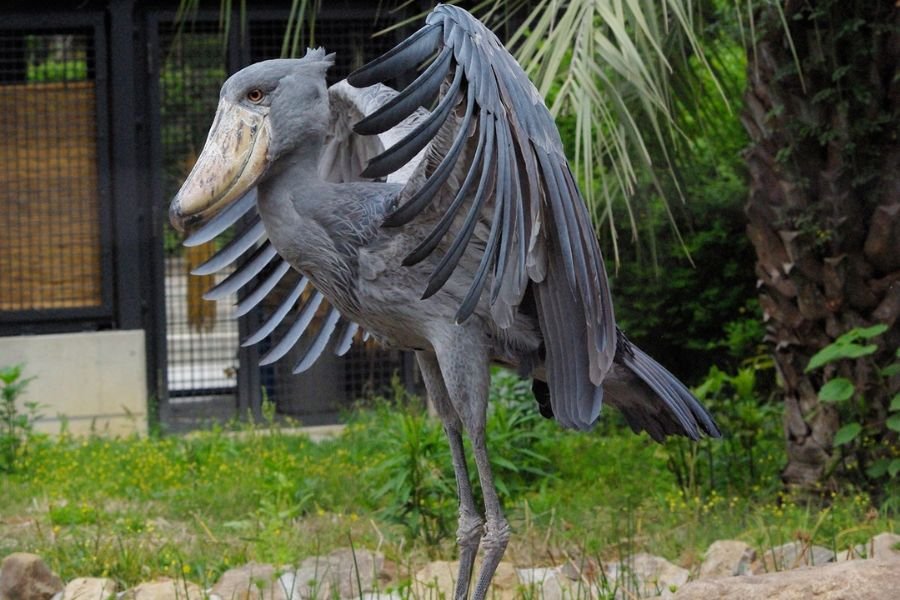
Physical features of Balaeniceps rex
The Shoebill stork impresses with its size and majesty: its height varies from 3.5 – 5 feet and can weigh an average of 12 pounds. Its wingspan (distance between the tip of one wing to the other) can exceed 7 feet. It is believed that it has this name because its beak looks like a shoe, those in the Dutch style, with a sharp point and in the shape of a hook.
Its long, slender black legs and prominent bill may resemble a heron or a pelican: but it is not related to either, not even the common stork. Some scientific publications show the Hammerkop (Scopus umbretta) as what may be a distant “cousin”, as the shoebill stork is the only one of the Balaenicipitidae family.
As an adult, it has predominantly gray plumage and a greenish tone on the back. Its belly and tail feathers are white, and what might be called a crest on top of its head is also gray. When chicks, it has a brownish color.
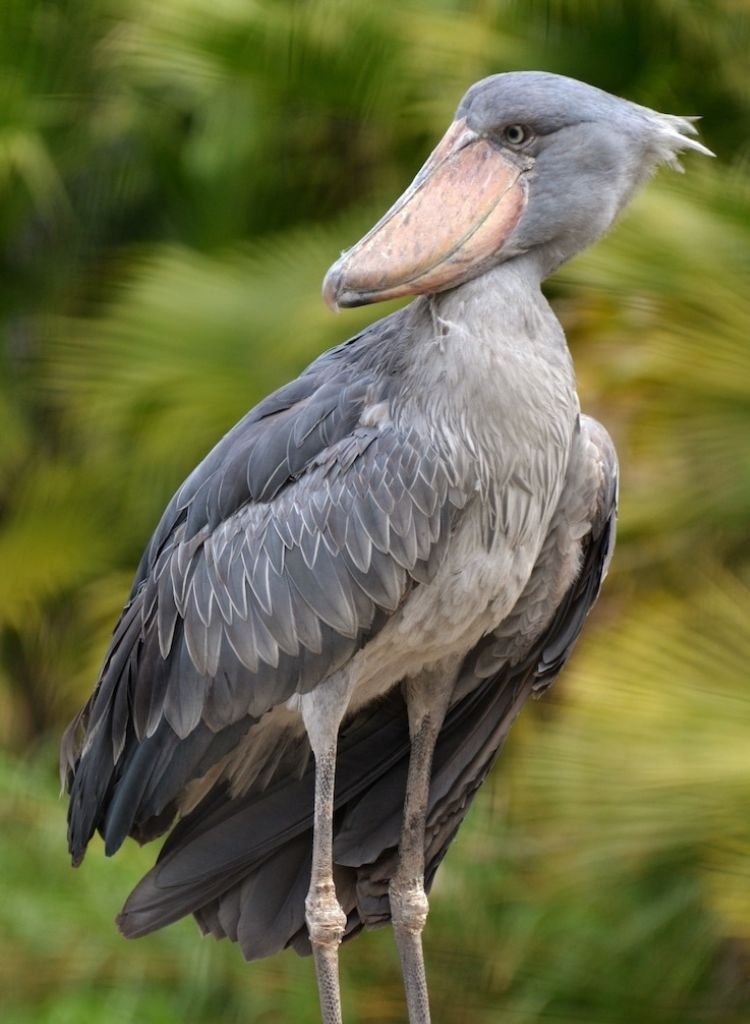
The behavior of the whalebill
Although, at first glance, it looks intimidating and aggressive, the truth couldn’t be further from that. It is a docile bird, and in captivity, it interacts well with humans. In nature, it is possible to safely reach some distance from its nest.
Socially, it is not one of the best-known on the ride. 😊 It is a bird with solitary behavior, and, except for periods when food is scarce, it is rarely seen in groups. They do not like to live close to each other, only having company during the mating period. They are classified as sedentary and do not usually migrate in search of new territories unless forced to do so due to lack of food or loss of habitat.
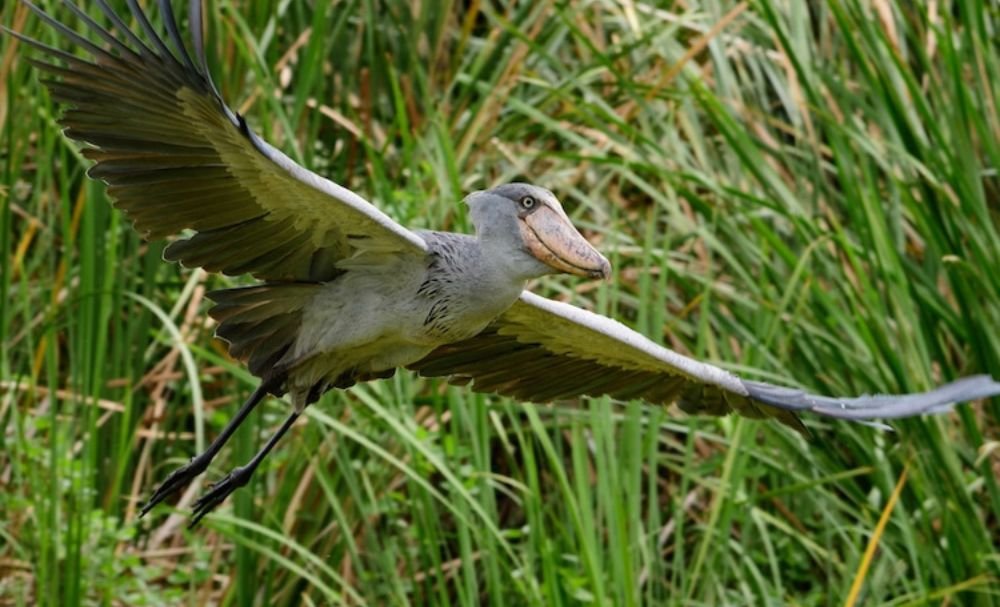
Can the shoebill stork fly? Yes, and that’s quite a feat given its weight and size. It often flies during the day over its territory. In the air, it is capable of flapping its wings around 150 times per minute, which makes it a very slow bird.
Among the wild birds, it lives longer, reaching up to 50 years. Amazing, isn’t it? They originate from the African continent and reside in swampy areas from Sudan to Zambia. It is considered a silent animal, however, sometimes it emits a sound with its beak that looks like a machine gun. Watch the video and be surprised.
Feeding
Another characteristic that manifests itself in its behavior is patience when hunting. It feeds mainly on fish, so it stays still in the water until a fish rises to the surface and grabs it with its large, curved bill. It can remain immobile in the same place for a long time. Amphibians, small crocodiles, water snakes, and rodents are also part of their menu. And this is one of the reasons why experts consider it so important for the ecosystem, as it is a natural predator of these animals, keeping their population under control.
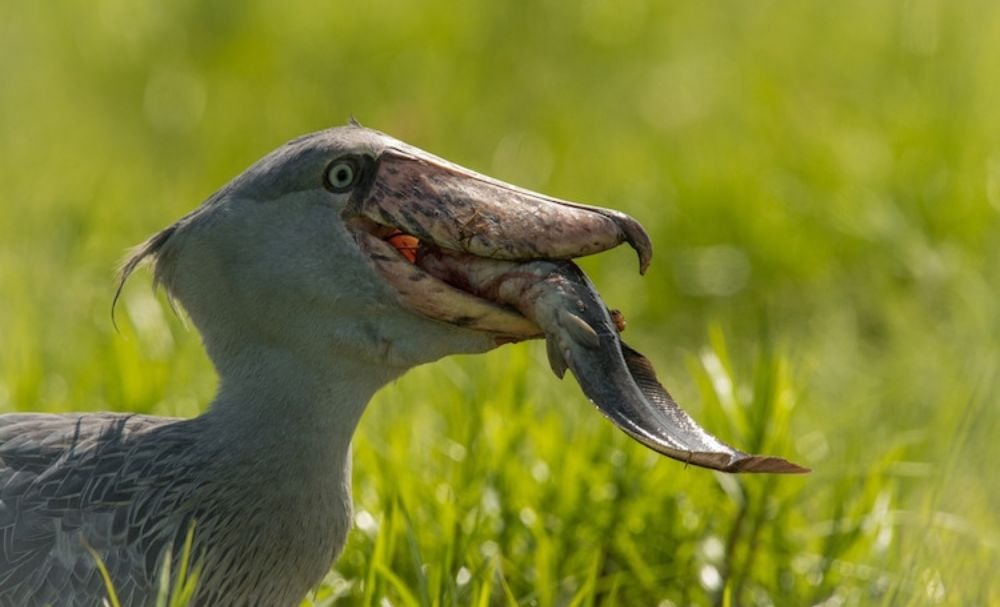
Reproduction
The shoebill stork is a monogamous bird, but that does not mean that they will be faithful or that they will always be together because as we saw earlier, they are solitary birds. The female lays, on average, 2 eggs, which will be cared for and incubated for 30 days. Unlike most birds, they do not make their nest in trees, but on soggy ground, on a small island, or on top of some floating vegetation. They use aquatic plants and pieces of bamboo, carefully weaving them, until they reach the approximate size of 3 feet in diameter. Both parents take on the task of caring for the eggs, keeping them moist and in the shade. When the eggs hatch and the little ones are born, their feeding is also the task of the stork’s father and mother: they regurgitate the food into the newborn’s mouth, which then swallows it. It has been recorded that, when the two chicks are born, they fight each other. Parents reject the injured chick, which ends up dying from lack of care. ☹ Chicks become independent at 3 months old.
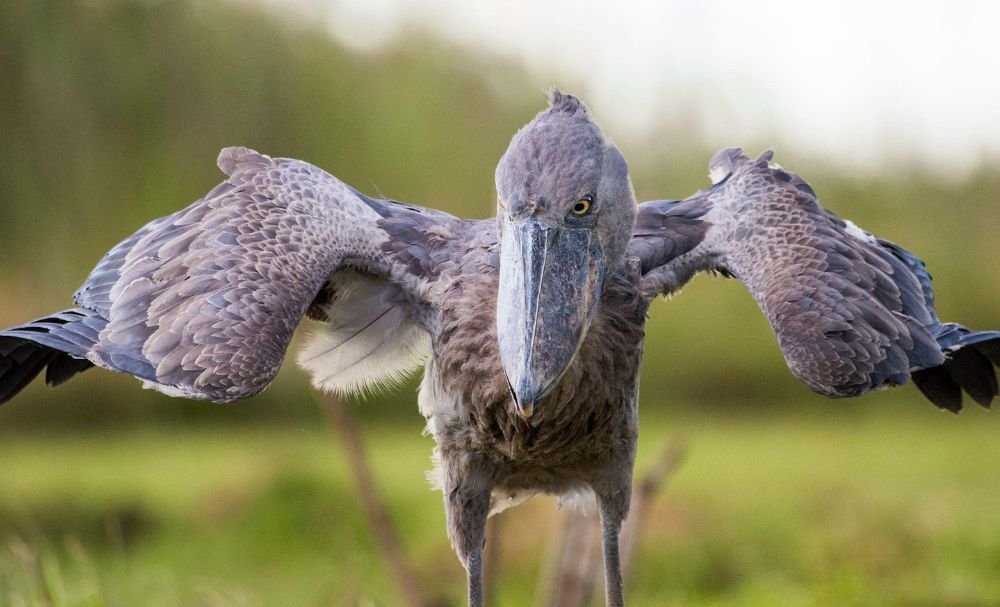
Conservation status
Unfortunately, the shoebill stork is on the list of vulnerable animals by the International Union for Conservation of Nature (IUCN). There are now only 3,000 to 5,500 birds worldwide, and that number continues to decline.
What are the reasons for this vulnerability? Let’s name a few:
- Bird considered a bad omen. That’s right! In some places, the local population hunts and kills these birds because they consider them a bad omen, and that it can bring bad luck to their plantation or territory.
- The fact that it is considered a rare bird also puts it in danger, as it is valuable in the illegal wildlife market for private collectors. A chick can sell for thousands of dollars.
- Because it is a “fearful” and non-aggressive bird, it gets scared easily and runs away from the nest, leaving its chicks or eggs in danger and at the mercy of natural predators or hunters who steal the eggs to sell on the illegal market.
- Capture and trade to zoos in Tanzania, where these animals are still allowed to be traded.
- Habitat loss is perhaps the biggest contributor to their extinction. Territories previously populated by these storks are transformed into agriculture, oil exploration, or livestock. With the decrease of their habitat, they form fewer pairs, which consequently decreases reproduction and in turn, over time, their population.
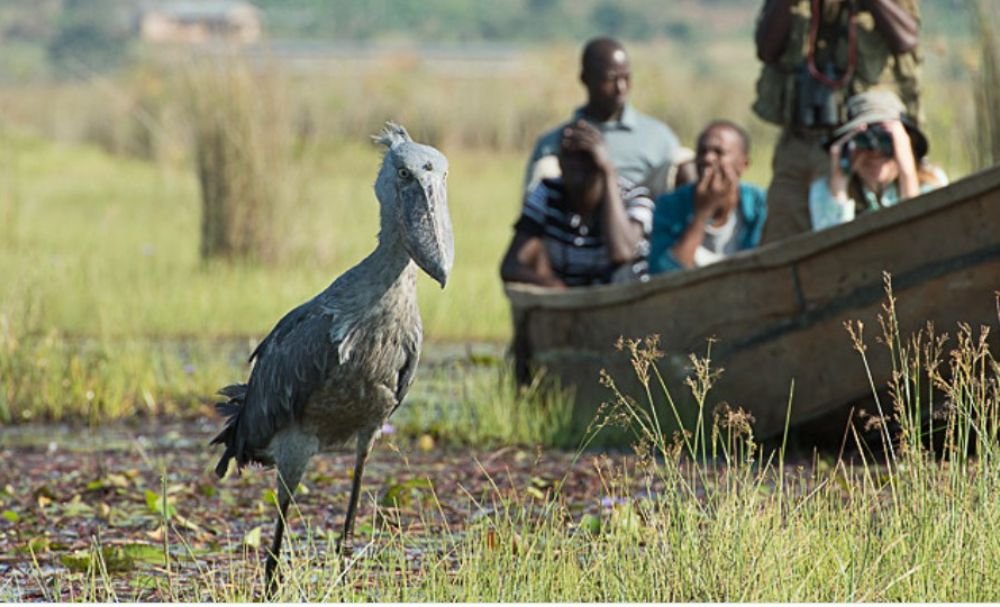
Conservation actions
According to the Agência Ambiental Pick-upau (Environmental Agency), in 2012 a conservation project for these birds began in Zambia. Fishermen act as guards during the reproductive period, monitoring and keeping an eye on the eggs and chicks. They record information about new nests, the number of eggs and chicks, as well as any suspicious activity by hunters. Since its implantation, 25 chicks have been successful and reached adulthood. Also, 6 eggs that had been stolen were recovered from captivity, rehabilitated, and returned to nature.
In addition, African Parks and the Zambia Department of National Parks and Wildlife, together with community actors, work to preserve wetlands and restore ecosystems. This meant that hunting was reduced (not only of shoebill stork but of several other animals as well), sustainable agriculture was adopted and endangered animals were able to return to their former habitat. Consequently, the community is benefiting from the income generated by the observation tourism and fish stocks are increasing, which benefits both fishermen and the shoebill stork.
Here we are rooting for these actions to continue and for them to give rise to others. The shoebill stork is an extraordinary animal and, like all other animals, deserves to be respected and preserved.
Did you enjoy meeting this prehistoric bird? Leave a comment below and follow us to learn more about the wonderful wildlife.
FAQ about Shoebill Stork
What is the scientific name of the Shoebill Stork?
The scientific name of the Shoebill Stork is Balaeniceps rex.
Where can the Shoebill Stork be found?
The Shoebill Stork is found in wetlands in East Africa, including countries like Uganda, Tanzania, South Sudan, and Zambia.
What is the conservation status of the Shoebill Stork?
The Shoebill Stork is classified as “Vulnerable” on the IUCN Red List of Threatened Species.
What is the most distinctive feature of the Shoebill Stork?
The most distinctive feature of the Shoebill Stork is its shoe-shaped bill.
What is the diet of the Shoebill Stork?
The Shoebill Stork is a carnivore that primarily feeds on fish, but it also consumes snakes, frogs, turtles, lizards, and other prey.
What is the wingspan of the Shoebill Stork?
The wingspan of the Shoebill Stork is approximately 8 feet.
What is the habitat of the Shoebill Stork?
The Shoebill Stork is found in wetland habitats, such as marshlands and freshwater swamps.
What is the biggest threat to the Shoebill Stork?
The biggest threat to the Shoebill Stork is habitat destruction.
What is the nesting location of the Shoebill Stork?
The Shoebill Stork nests on small islands or floating vegetation in the middle of the swamp.
What is the lifespan of the Shoebill Stork?
The Shoebill Stork can live up to 35 years in the wild.

